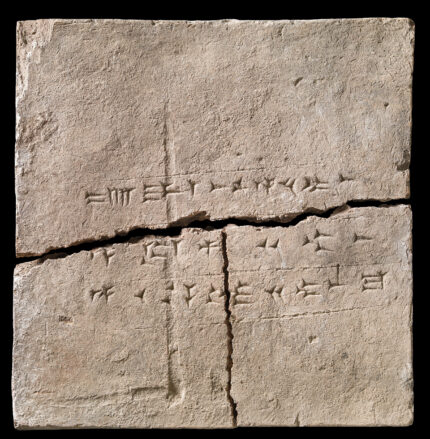In a scientific first, researchers at the University of Oxford have successfully extracted ancient DNA from a 2,900-year-old clay brick. Ancient DNA is difficult to extract even from sturdier bones and teeth because it fragments over time and is easily contaminated. It has never before been successfully extracted from clay. Protected from contamination in the middle of the brick’s mass, the DNA survived in sufficient concentrations to reveal the presence of 34 different kinds of plants.

It was discovered during the archaeological excavations at Nimrud in 1949 by British archaeologist Max Mallowan and his wife, mystery writer Agatha Christie. (I read Murder in Mesopotamia on a plane when I was a kid and not to state the obvious, it had a very deep impact on me.) The brick was donated to the National Museum of Denmark in 1958.
The brick was made from mud collected on the banks of the Tigris river. It was then mixed with plant-based materials (for example straw) and animal dung and shaped into a brick for sun-drying. Because they’re dried in the sun, not fired in the high heat of a kiln, mud bricks are hard and strong enough to build towering walls out of, they are also inherently fragile. When the brick arrived at the museum it was broken horizontally in two pieces. It broke again in 2020, a vertical split in the bottom half, which gave researchers the unique opportunity to take samples of the brick’s uncontaminated inner core.
The presented study uses a modified protocol that has previously been applied to materials such as bone, considering that clay samples are porous with high affinity towards nucleic acids. This required a gentle approach to extract the aDNA without degrading it further by applying harsh treatments. The applied method was successful in extracting plant DNA from the samples of a clay brick.
Geneticists worked with Assyriologists, archaeologists and biologists to compare the DNA findings with botanical data from Iraq and from descriptions of plants in ancient Assyrian sources.
Through extraction and sequencing of aDNA from the clay brick and the following data analysis, we were able to detect 34 unique taxonomic groups of plants representing the order Laurales as well as seven distinct families from other orders: Apiaceae (subfamily Apioideae, tribe Selineae), Betulaceae, Brassicaceae (including the genus Brassica), Ericaceae (including the subfamilies Ericoidae and Vaccinioideae), Poaceae (tribe Poeae and Triticeae), Fagaceae (genus Quercus), and Salicaceae. […]
The most abundant sequences of plants were from the families Brassicaceae (cabbage) and Ericaceae (heather). Furthermore, contributions were observed from the families Betulaceae (birch), Lauraceae (laurels), Selineae (umbellifiers) and Triticeae (cultivated grasses).
The study has been published in Nature Scientific Reports and can be read in its entirety here.
* This article was originally published here








No comments:
Post a Comment